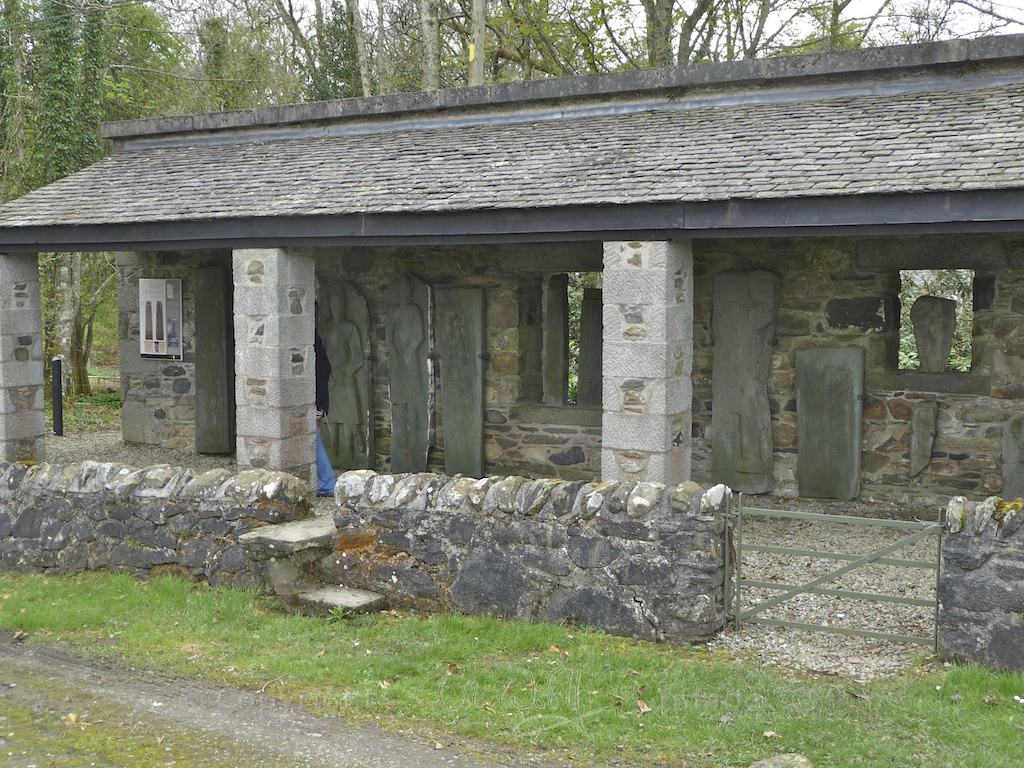
Kilberry: sculptured stones and an enduring mystery
Divided by the wide expanse of Loch Caolisport, Knapdale in Argyll is a landscape of low wooded hills, windswept areas of rough grassland and bracken, and patches of peat bog with reedy lochans.
The country is gentle and muted, with the sea not far away in either direction; prone to mists and fine drizzle, its mild climate allows lichen and mosses to run riot. The old oak trees are alive with songbirds in spring and summer, and the woodland floor is speckled with the white stars of wood sorrel and windflowers.
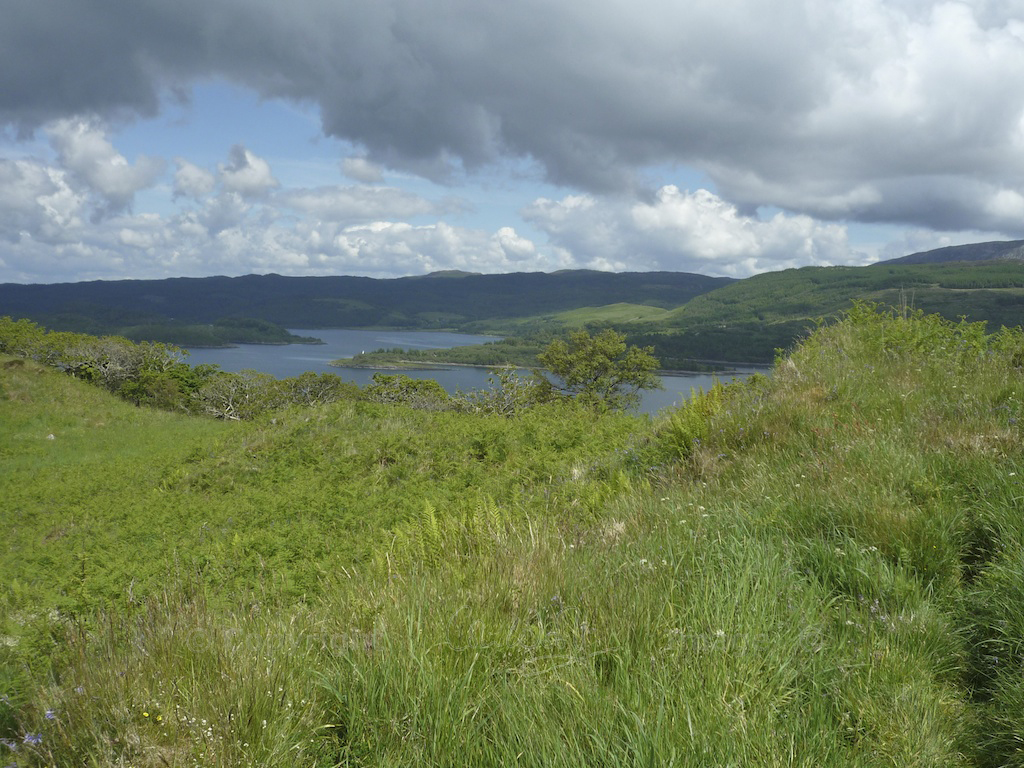
A minor roa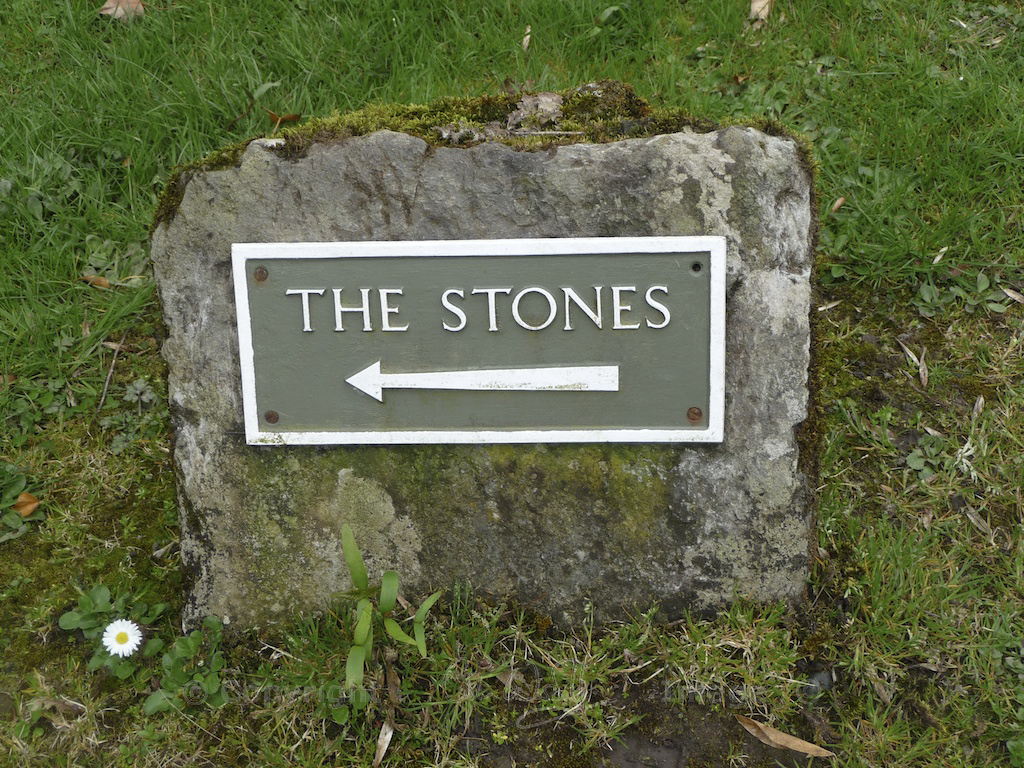 d with passing places threads its way around the sea lochs, taking you through a number of villages that consist of nothing more than a few low-roofed cottages overlooking the shore. You might not see a soul, and you might not even meet a car; there’s a sense of going back in time, but it’s more subtle even than that, almost as if the past and present are one and the same: like the ivy that smothers the crumbling walls of abandoned bothies, blurring the lines, blending the living with the dead.
d with passing places threads its way around the sea lochs, taking you through a number of villages that consist of nothing more than a few low-roofed cottages overlooking the shore. You might not see a soul, and you might not even meet a car; there’s a sense of going back in time, but it’s more subtle even than that, almost as if the past and present are one and the same: like the ivy that smothers the crumbling walls of abandoned bothies, blurring the lines, blending the living with the dead.
It was in this pleasant trance-like state, as we were driving around Knapdale a couple of years ago, that I glimpsed a roadside sign bearing the words ‘Kilberry Sculptured Stones’. This woke me up, because it is the kind of sign I like to see.
As we headed up the narrow track we felt a little as though we were trespassing, because in fact this lane is also the private driveway of Kilberry Castle. However, there is a small car park for visitors, and another sign which points reassuringly to ‘The Stones’.
We certainly didn’t have to walk far to see them: neatly arranged and lined up, protected by a specially-designed building that shelters them from the worst of the weather, are enough wonderfully carved grave slabs to satisfy the most stone-hungry traveller.
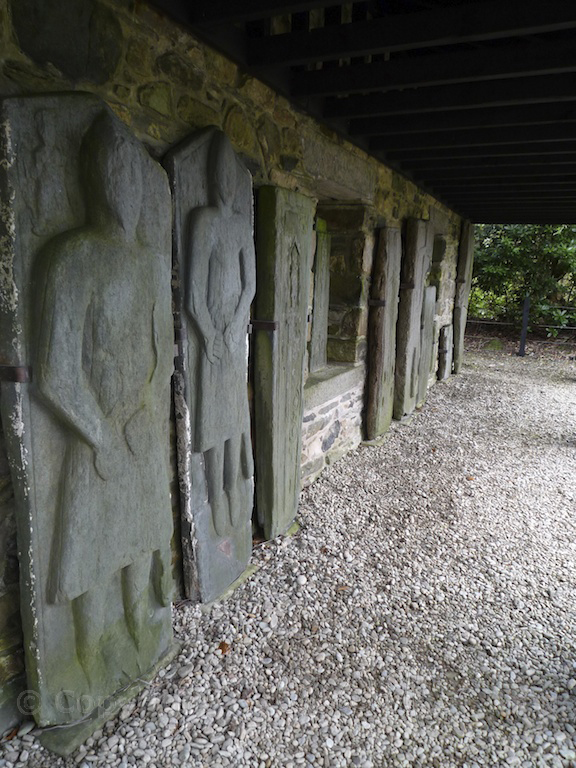 The oldest examples are fragments, incised with simple crosses, and these date from the early Christian period – in other words, the sixth or seventh centuries AD. Apparently there was an ancient church nearby, of which nothing now remains; this was dedicated to St Berchan, a little-known Irish missionary whose name has mutated through Beryan and Berry to form part of the present name of the village: Kilberry, or the church (in Gaelic, ‘cille’) of St Berchan.
The oldest examples are fragments, incised with simple crosses, and these date from the early Christian period – in other words, the sixth or seventh centuries AD. Apparently there was an ancient church nearby, of which nothing now remains; this was dedicated to St Berchan, a little-known Irish missionary whose name has mutated through Beryan and Berry to form part of the present name of the village: Kilberry, or the church (in Gaelic, ‘cille’) of St Berchan.
The information sign put up by Historic Scotland tells us:
“The church’s burial ground may lie beneath the bowling green [of the Castle] as human bones were recovered during work on a drain beneath the green in the 1920s.”
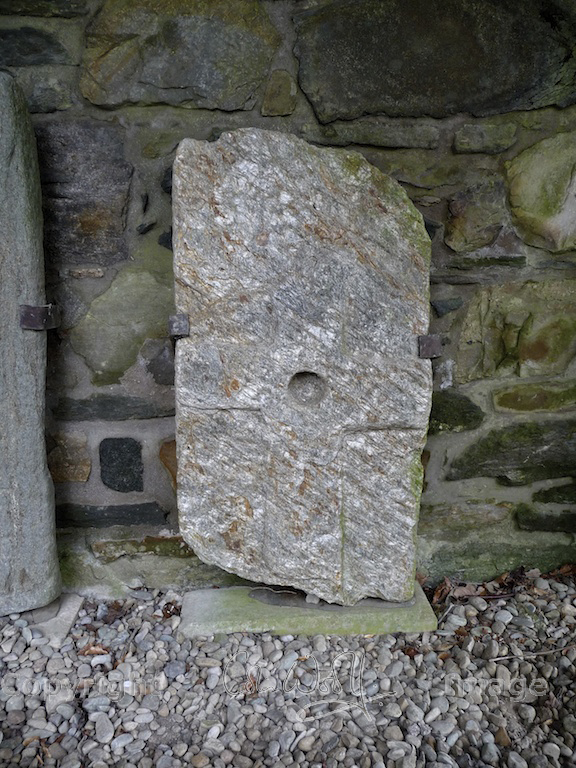
The early grave markers at Kilberry are contemporary with the beautiful stones of a similar design at Kilmory Knap (Kilmory meaning ‘the church of St Maelrubha’) which lies a few miles to the north.
700 years stand between these simple stones and their larger neighbours, which are described as ‘fine examples of late medieval carving’. The much-eroded effigies of two knights in armour draw the eye, resting negligently against the wall of their shelter as if waiting for a bus that will never come. According to Historic Scotland, there is “…one named John, son of Mauritius. Mauritius is a Latinised form of the Gaelic name Muiredach or Murchad. It was common amongst the MacMurachies, who are reputed to have held Kilberry at one time.”
The surfaces of the effigies have been worn smooth, and I could not see any inscriptions revealing their identity, so I can only assume they have been lost since the words were recorded.
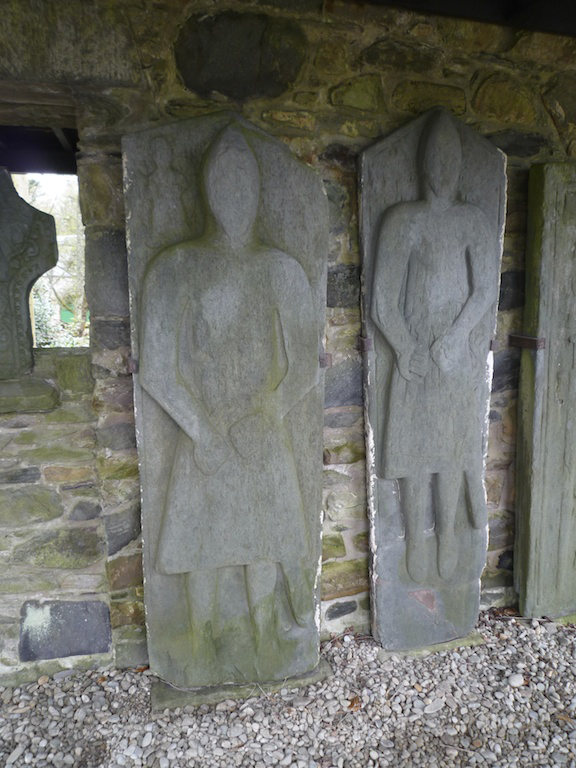
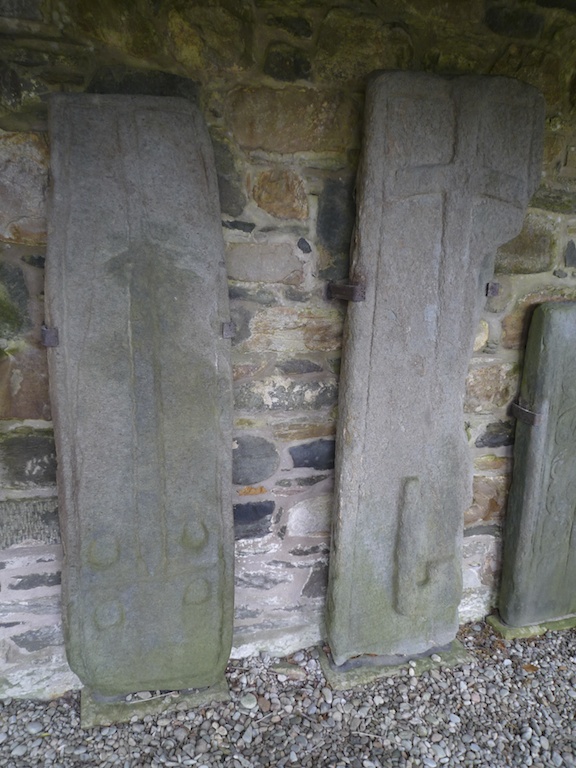 Next to them are two or three stones bearing the impressions of swords. Stark and challenging, they are perhaps even more evocative than the figures themselves…
Next to them are two or three stones bearing the impressions of swords. Stark and challenging, they are perhaps even more evocative than the figures themselves…
“According to the practice of the time, the dead man’s sword would be laid on the stone. Its outline would be incised and chiselled. The carving would thus reflect precisely the dimensions, shape and style of the original weapon.”
Baigent and Leigh, ‘The Temple and the Lodge’
The above description refers to a custom among medieval Templar knights. I have already mentioned the presence of Templar-like symbols on stones at Kilmory Knap Chapel. I think I can detect a similar ‘cross pattée’ here at Kilberry, on a stone that looks very much like a marker singled out by historians Michael Baigent and Richard Leigh as being indicative of a Templar site.
“Templar churches invariably had a cross either carved above the entrance or standing freely outside. The cross, whether simple or embellished, was always of distinctive design – equal-armed, with the end of each arm wider than its base. Inside the chapel of Kilmory stood just such a cross, dating from before the fourteenth century. Had this cross been found anywhere else in Europe, no one would have had any hesitation in recognising it as Templar and ascribing the chapel to the Order.”
Here is the marker at Kilmory Knap, to which the authors are referring:
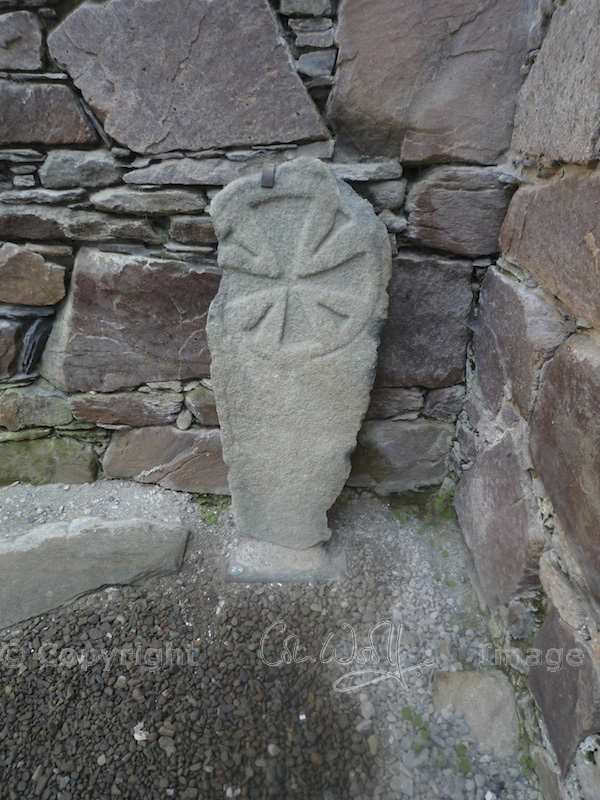 And here is one that I photographed at Kilberry. To me, the similarity is quite striking, although I am prepared to admit that I’ve probably entered the realms of fantasy!
And here is one that I photographed at Kilberry. To me, the similarity is quite striking, although I am prepared to admit that I’ve probably entered the realms of fantasy!
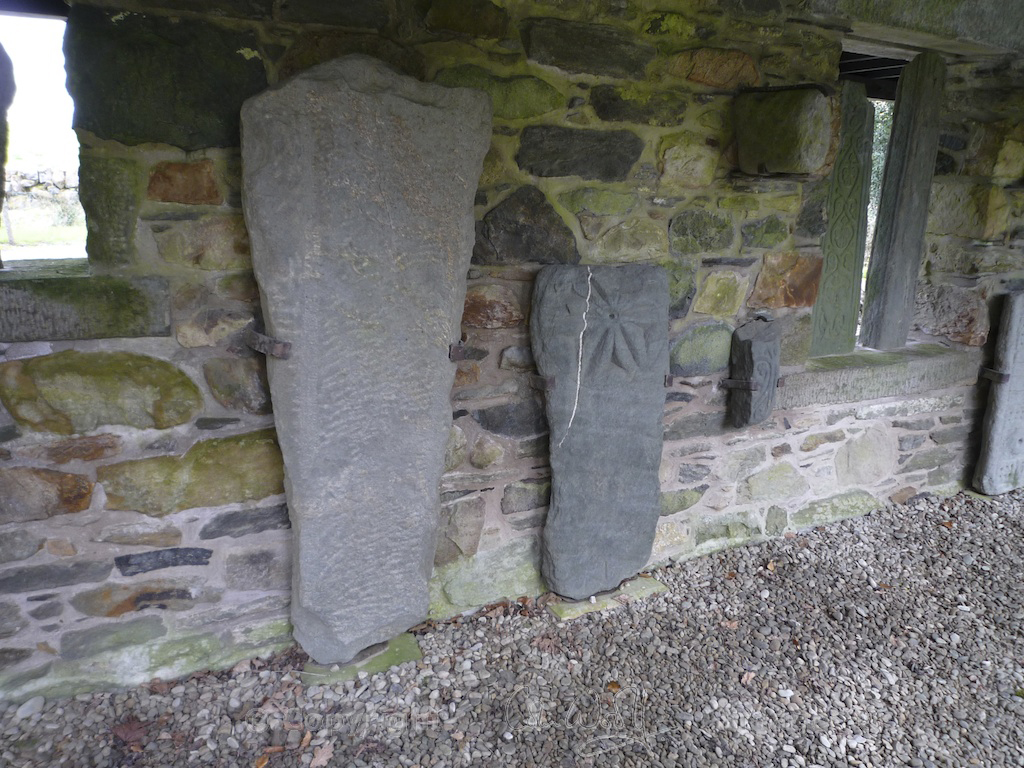 The presence of Knights Templar in such a remote part of the Scottish coast is perhaps not as unlikely as it first appears: it has a lot to do with Ireland, Pope Clement V, illegal weaponry, and Robert the Bruce. It’s a totally fascinating story, and I will refer you to my earlier article on Kilmory Knap Chapel if you want to know more!
The presence of Knights Templar in such a remote part of the Scottish coast is perhaps not as unlikely as it first appears: it has a lot to do with Ireland, Pope Clement V, illegal weaponry, and Robert the Bruce. It’s a totally fascinating story, and I will refer you to my earlier article on Kilmory Knap Chapel if you want to know more!
Set into a recess in the central wall of the shelter is the Kilberry Cross. Dating from the 14th or 15th century, this is the centrepiece of the exhibition, but you might be forgiven for passing it by. It doesn’t look like a cross at all, and this is because only the shaft remains: the cross-head could be buried in any of the surrounding woods or fields.
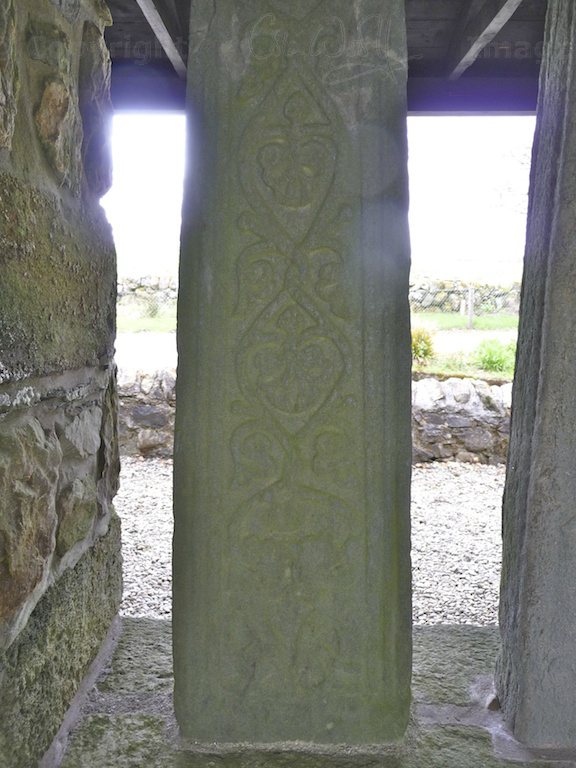
But we still have much to look at in the cross shaft. Standing just over three feet tall, it is both a work of art and a snapshot of medieval life. On one side it is embellished with inter-twined stems and foliage, at the base of which are what Historic Scotland describes as “a pair of back-to-back prancing lions”. These have been eroded so much that it requires a certain degree of imagination to appreciate them. Here is a photo of the Historic Scotland sign, which shows them in better detail (white background, right-hand stone).
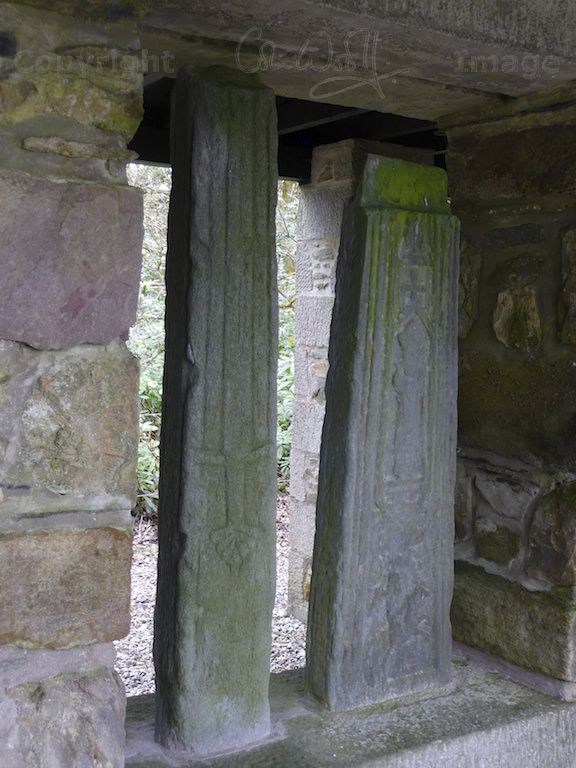
The other side is even more intriguing. Carved at the bottom is a warrior astride a rearing horse, and the figure above him looks like a bishop wearing a robe and mitre. At the top is a third figure, partly eroded, holding an archbishop’s staff. (I am relying on Historic Scotland for the last details, because the top figure is so badly damaged).
Who is the man on horseback? Based on the story of MacMillan’s Cross, my theory is that this monument might have been erected by a local chieftain or landowner – perhaps one of the MacMurachies – who is portrayed as the mounted warrior being blessed with good fortune by the clergymen.
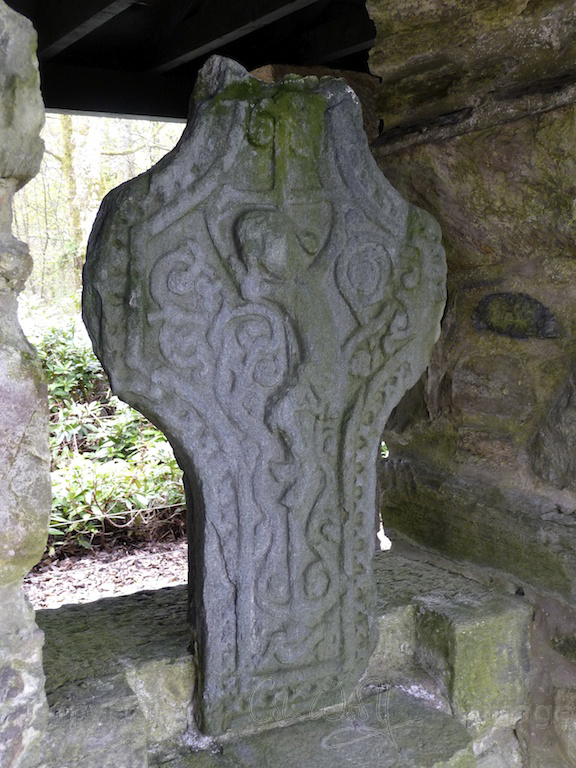
It is obvious that the stones have been removed from their original locations, but where were they found? The Campbell family still owns nearby Kilberry Castle, which includes a much earlier tower house in its Victorian structure. According to the Royal Commission on the Ancient and Historical Monuments of Scotland, the sculptured slabs had been “…recovered from walls or hearths by former lairds; some were found in a bridge to the gardens.”
A family mausoleum was built in the Castle grounds in 1735, and some of the grave slabs and markers were incorporated into the walls of this building.
And here is where history, folklore and tragedy meet. The RCAHMS goes on to say:
“There is a strong local tradition of a ‘monastery’ here, and ‘an old building where the monks ate, with stone seats in it’ was remembered as standing east of the castle, by an old man in 1913. This was blown up in 1849 for use as building material.”
Of course, just to seal the mystery, “No documentary evidence of a monastery has been found…”
There’s something tantalising about the old man’s recollections, because they are unique and indisputable. In the case of Kilberry, they may be our only window into an ancient past that is now lost to living memory. This should be a lesson to us all: in this era of instant communication, we have abandoned the tradition of handing down stories from generation to generation. We have broken the thread. The Druids had it right after all.
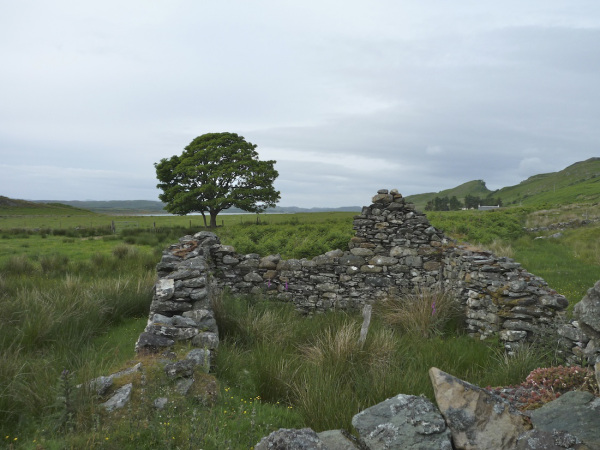
There are over 20 carved stones at Kilberry, including the cross-shaft, and they were moved to their present site in the 1950s. There is free admission if you wish to go and see them, but as far as I know, there is no public access to the Castle or the mausoleum.
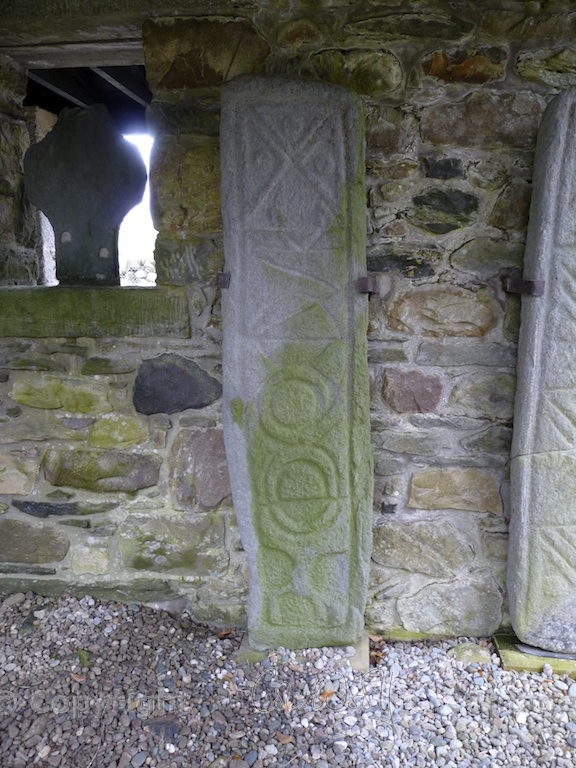 Visiting the sculptured stones at Kilberry is a different experience from, say, opening the door to Kilmory Knap Chapel and being quietly awe-struck by its contents. There’s no lingering atmosphere of reverence, despite the fact that you are likely to have the place all to yourself.
Visiting the sculptured stones at Kilberry is a different experience from, say, opening the door to Kilmory Knap Chapel and being quietly awe-struck by its contents. There’s no lingering atmosphere of reverence, despite the fact that you are likely to have the place all to yourself.
But there is a deep and natural tranquillity, and that is more to do with the character of Knapdale; a hermit looking for isolation and solace would still find it here.
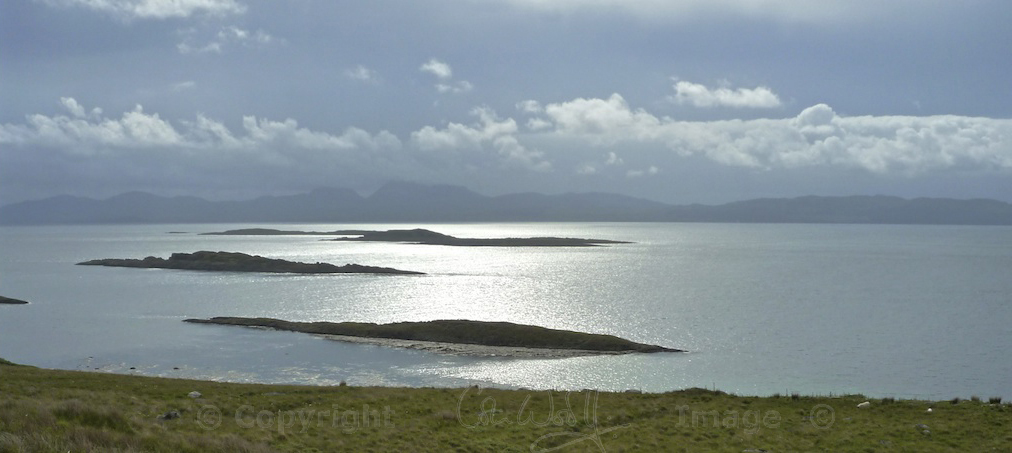
In the 7th century, what on earth inspired the likes of St Berchan, St Brendan, St Columba and their contemporaries to take the daring step of forging a new life for themselves across the Irish Sea? Was it really a determined bid to convert the Picts to Christianity? The alluring chance to become a saint of their time? To see their name in an illuminated manuscript? Or was there something more? This is something I’ve always been fascinated to know.
Sources:
- Royal Commission on the Ancient and Historical Monuments of Scotland
- Historic Scotland
- Scotland’s Places
- Michael Baigent and Richard Leigh, ‘The Temple and the Lodge’
Photos copyright © Colin & Jo Woolf
Further reading…
You might like to take a look at these features about Kilmory Knap Chapel on Loch Sween, just a few miles (by water) away from Kilberry.
The first feature looks at the ancient chapel itself, which sits on a headland above the wonderful white sands of Kilmory Bay and contains some of the most incredible carved grave slabs I have ever seen…
…while the second feature takes a longer look at the interesting stories behind some of the stones, including the impressive MacMillan’s Cross.
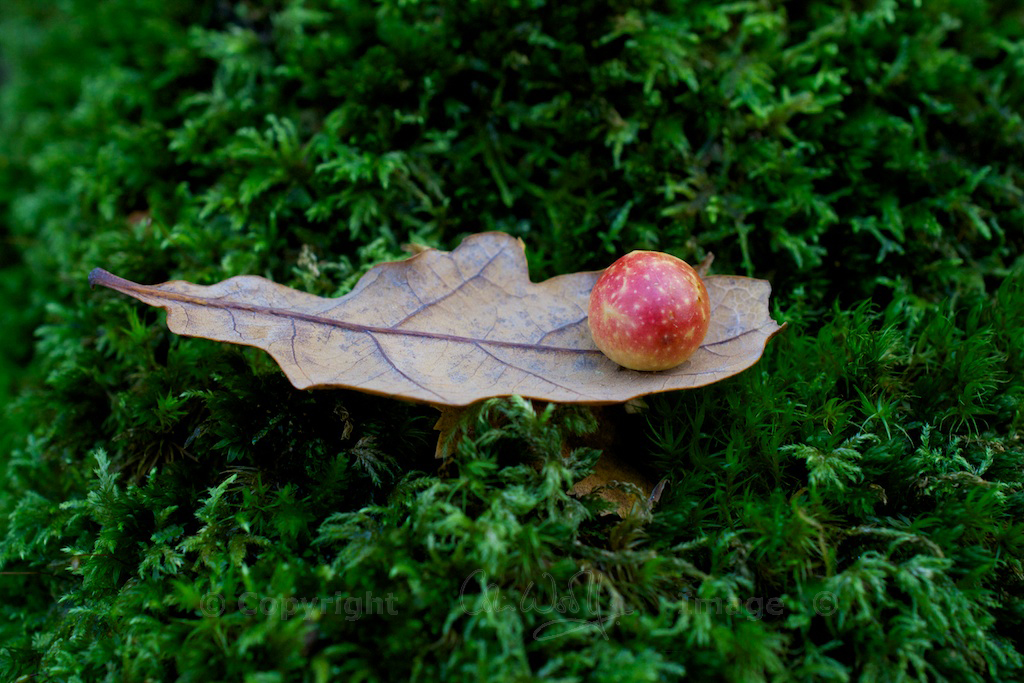
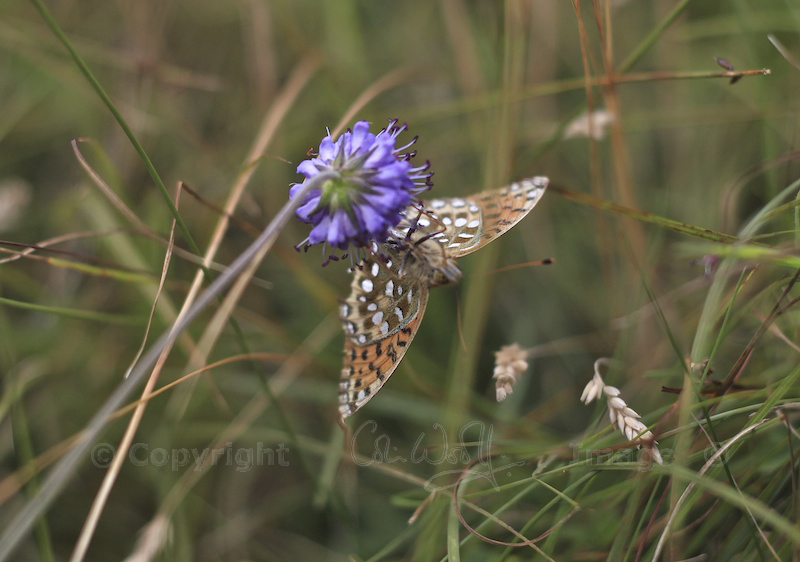

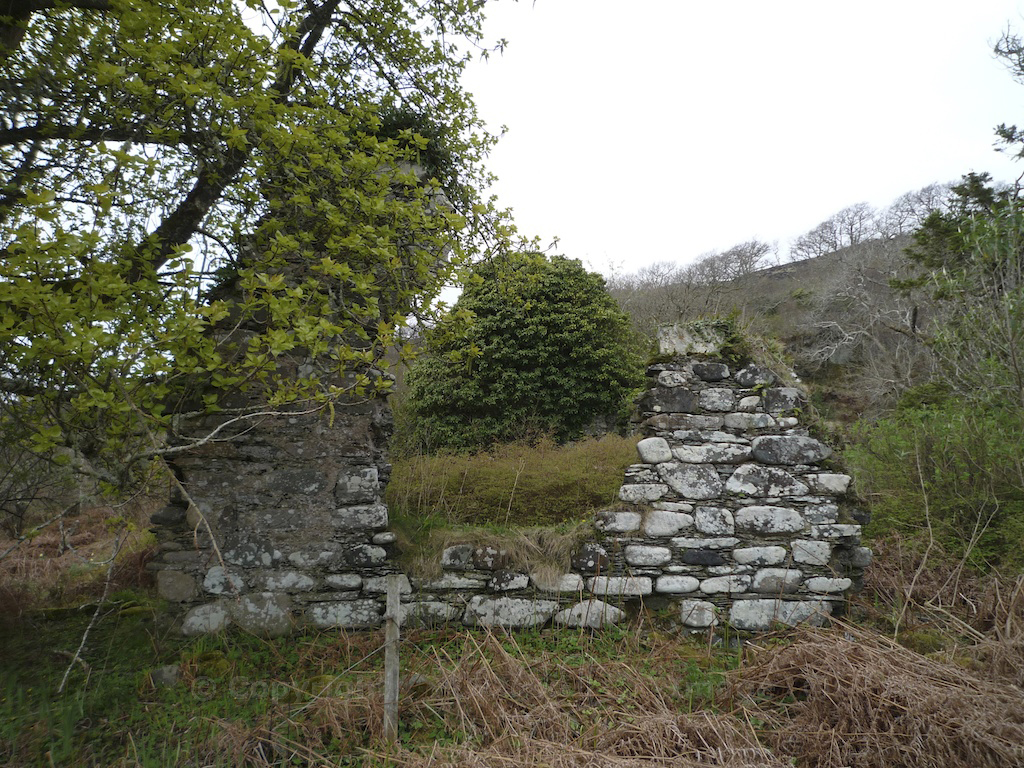
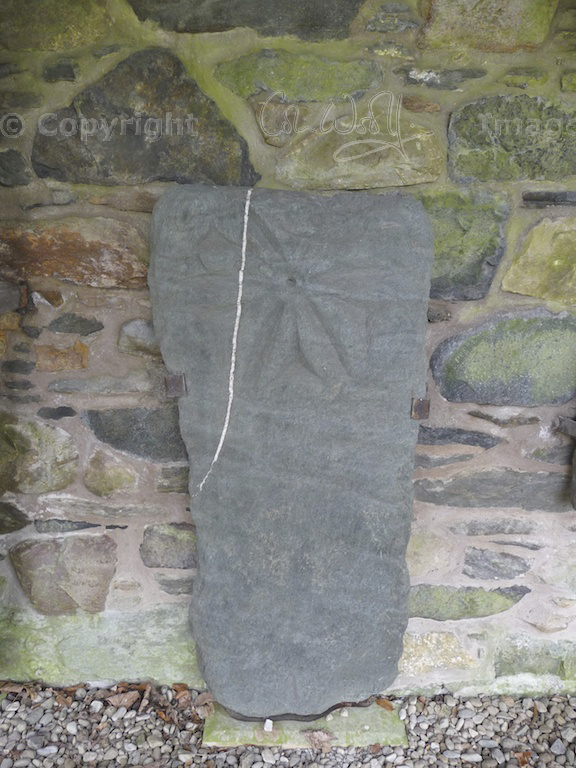
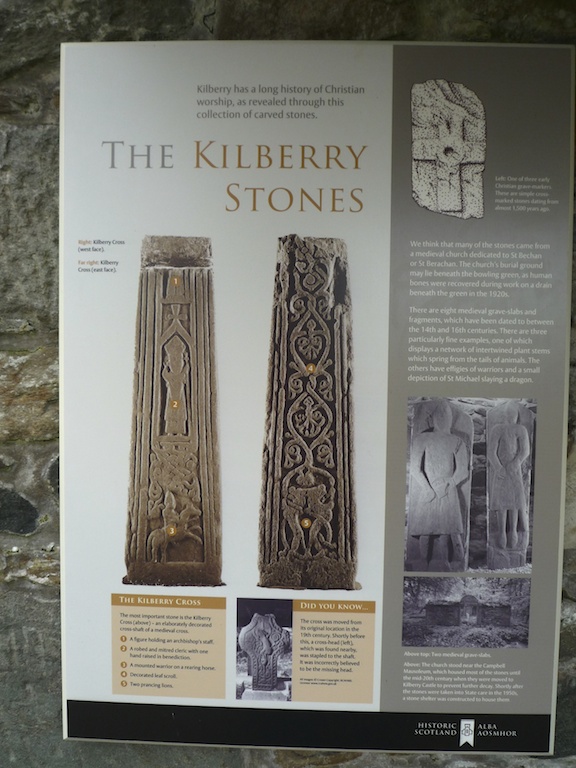

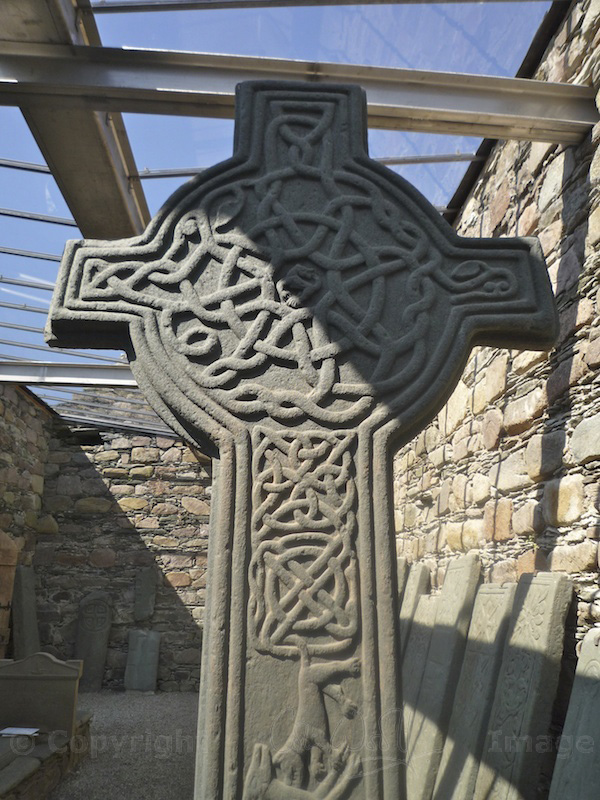
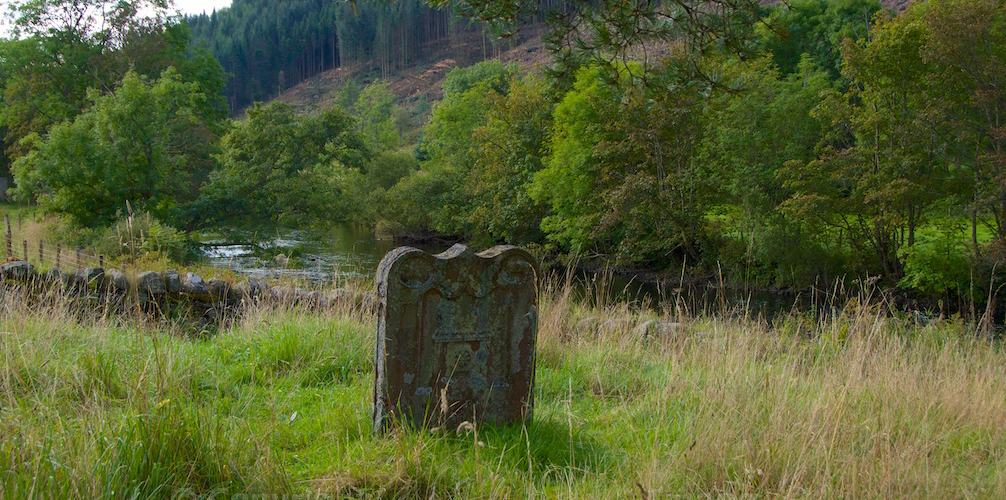
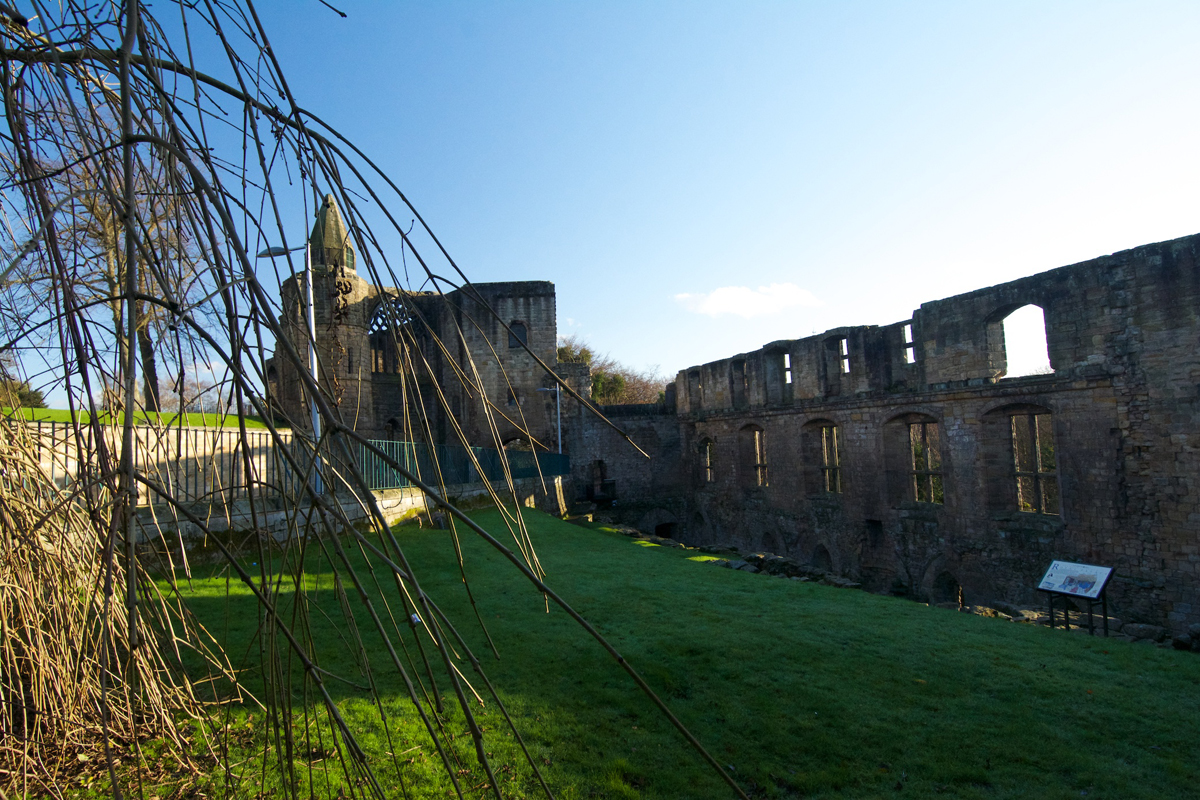
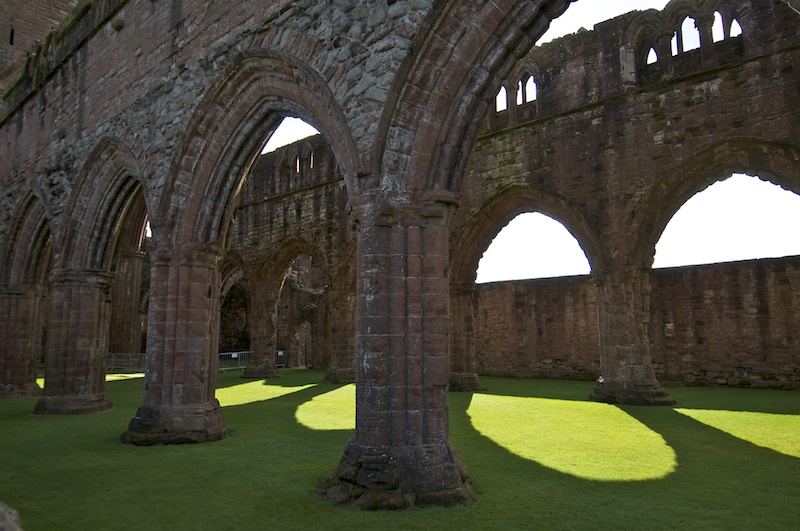
27 Comments
blosslyn
Love the knights, as you might guess….I too found a grave slab of a Knight yesterday in All Saints Church, its bearing the cross pattee of the Knights Templar. Problem is, its a bit broken and I really didn’t take that much notice, until l looked the church up. So I will have to go back and have a proper look, it was also getting a bit dark. I love the history that accompanies your photos…. 🙂
Jo Woolf
Thank you, Lynne! It’s quite exciting to discover signs of the Knights Templar, for some reason I can’t explain! Having read some of Baigent and Leigh’s book I now want to read about more Templar-related places – this is a fascinating story, even if it’s only conjecture!
tearoomdelights
More amazing carvings, although the mention of prancing lions reminds me of the eye of faith you need to see some of the animals found in constellations. I sometimes wonder about the way we accumulate information now, will it be accessible in the future? So much is recorded in various forms of media but a lot of it is conjecture, hype and spin. Anyone in the future looking for established facts about our times might find it quite a tiresome task.
Jo Woolf
Yes, that’s very true! Constellations are the worst – I always imagine they were dreamed up by ancient people who had drunk a bit too much mead. As you say, I think information overload will be the problem in centuries to come – and how to find the truth.
Ash
Wonderful history & wonderful pictures too. Your posts really make me want to explore more. Thank you.
Jo Woolf
Thank you very much, Ash. I am glad it inspires you to visit these places – writing about Kilberry made me want to go back there, too.
Homestead Ramblings
It looks as if it has a lone and solitary wind-swept feel to it. Kind of a brooding restlessness feeling from the photo’s. Did it feel that way when you were there? What an interesting place.
Jo Woolf
It is certainly a windswept peninsula, and the ruined bothies dotted about give it an abandoned feel. There is always a kind of sadness about these, because of the Clearances, although not all the ruined buildings date from that time. The top photo was taken in the middle of summer, on a different day from the others, and it is amazing how much difference the sun’s warmth can make to your experience of a place! The impression I get of Knapdale and Kintyre as a whole is one of peace and a slower pace of life, perfectly in tune with nature.
mysearchformagic
Beautiful – like you, there is nothing I like more than happening across a sign that promises something ancient and magical…
Jo Woolf
Thank you. There’s nothing better than a sign pointing to some stones or an ancient site! 🙂
Hank.
Thank you for another magical journey, Jo! Lovely photos…it’s just amazing to think that those swords are LIFE SIZE. When you see them in person, it is terribly hard to imagine picking one up, much less carrying one around and using it. Perhaps those Claymore/sword carvings were the early Scots version of “fishing stories” (you should have seen the one that got away!) but I’m guessing not. Also, on one of the effigies, you can clearly see the fellow is holding his dagger with the clasped fingertips facing the viewer. This stance seems somehow more alive, and definitely a person to pay attention to!
Jo Woolf
Thank you very much, Hank, for the lovely comment! I noticed that about the swords too, and the unusual pose of their right hands – at Kilmory there is a graveslab of a knight in the same pose, with a better-defined dagger. And yes, if the swords are life size, they boggle your mind. There is an old sword preserved at the Wallace Monument in Stirling (I haven’t seen it myself) that is reputed to have belonged to William Wallace, although some historians disagree. It is 5’6″ long including the hilt, which means that Wallace must have been a giant of a guy.
Anny
I thoroughly enjoyed this post Jo, it has all the elements I love – history and mystery! Medieval swords really were huge – I remember seeing some at Warwick Castle many years ago and being amazed at the size – no wonder knights spent so much time exercising – they’d have needed to be very fit indeed to wield those weapons.
Jo Woolf
Thank you very much, Anny! There’s nothing I like better than a blend of history and mystery, and the whole Templar thing has kind of drawn me in! You’re right about medieval swords – we saw a claymore on display at Dunvegan Castle, and it was immense. A muscly physique in those days probably determined whether you lived or died (at least if you were a man!)
Carmen Mandel
I have been on the path of the Knights Templar in Jerusalem and Acre (Akko), Israel, but nothing compares in local richness to these small and beautiful churches, full of magnificent slabs and carvings in such a calm atmosphere. Actually, the Knights Templar took their name after their first headquarters on the Temple Mount in Jerusalem, which they called the Temple of Solomon. This is one of the most exquisite architectural masterpieces in Israel.
Truly enjoyed this and both parts of the related posts. Wonderful imagery and tales, Jo!.
Jo Woolf
Wow, you mean you have travelled there? That sounds like an amazing trip. Yes, I have read a bit about the Temple of Solomon, and what little is left of it. The whole story of the Templars is intriguing. Thank you very much – I’m glad you enjoyed this, and I know you would love these little churches and their surroundings.
Angus MacMillan
There are traditions way before the old man. In respect of this site, one is that the MacMurachies were the MacMhuirich bards to the Lords of the Isles and that the ‘monastery’ was their bardic school. This would fit with the 14/15th century date of the stones and with the Historic Scotland tanslation of Latin Mauritius as Muiredach.
Jo Woolf
That’s very interesting! It all seems to fit and I can well believe it. Thank you for sharing this. Have you made a study of this area or this place?
Alan
Was at the Stones yesterday. You have hit it “square on the head”! Wonderful, evocative writing. Thanks for the detailed descriptions. I have bookmarked your site in our Scotland folder.
Jo Woolf
Thank you very much, Alan! Yes, those stones are fantastic, aren’t they, and tucked away in such a lovely little place?! So glad you enjoyed seeing them. I hope you’ll find lots more inspiration – Argyll and especially Knapdale are so rich in ancient sites. 🙂
Lan
Hi Jo, I visited the Kilberry stones when I was a boy some sixty years ago. I have to confess that at that time and age I was not as interested in them as I am now. However there was one stone that did capture my imagination and has lived in my memory ever since. That one was the “Manhood stone” and I was wondering why there seems to be no mention of it. Perhaps it did not actually form a true part of the collection and was subsequently removed. Do you have any knowledge of it?
Jo Woolf
Wow, how very interesting! No, I’ve never heard of the Manhood stone. I shall have to see if I can find out more! If I do, I shall let you know. Thanks for your comment, Lan!
Jo Woolf
Further to my earlier comment, I have found this blog post which is a few years old, about ‘lifting stones’ around Scotland. I knew nothing about these! Apparently a man called Peter Martin was researching them, but from another source I have now found that he has since passed away. http://kilchoan.blogspot.co.uk/2012/03/lifting-stones-1.html It sounds likely that the stone you saw at Kilberry was one of these, and may now be lost or moved. At one time, there were a lot of these stones scattered around the place, but known to the local population. The trouble now is that identifying such stones is a bit of a problem! It seems that some of the surviving ones are still used in strongman competitions. But how interesting. I also read that this old tradition is echoed in modern gateposts with the spherical balls atop the pillars! Peter Martin wrote a book called ‘Of Stones and Strength’, cataloguing the many stones he found, which may be worth reading if you would like to pursue it further.
Lan
Hi Jo, thank you for the information. I was brought up in the first house up the Kilberry Road and I return to Mid Argyll for holidays. Next time I am there I will make some enquiries of old friends to see if I can find out what happened to this stone. If I manage to get any information as to its whereabouts and/or its history I will post here.
Jo Woolf
That would be fantastic, thanks Lan! What a lovely place to grow up – so unspoilt and very beautiful.
Bob Hay.
Have just read this article for the first time Jo. As always, informative and intriguing.
In 1982 when ‘The Holy Blood and the Holy Grail’ by the same authors above, I was back in Scotland on holiday from Australia where I live now, and made a beeline for Kilmory Knap to see the effigies.
The authors had postulated a link between the Freemasons and the Templars whom according to them had been excommunicated by Rome, sailed from La Rochelle in France with their treasure,rounded Ireland and sailed into Loch Sween to eventually join up with Bruce (also excommunicated) and assist him at Bannockburn.
According to the book one of the effigies at Kilmory had a Masonic square above the knight and showed a photo of it. I went over those effigies with a magnifying glass and coudn’t find a trace of it . Did they possibly mean Kilberry which I didn’t get to?
Jo Woolf
Thank you, Bob! Oh, the Templars theory is so tantalising! I have looked at several old burial sites here in Argyll over the years, and like Baigent and Leigh I have seen grave slabs with a single, simple sword outline which was supposedly the mark of an anonymous Templar grave. The one at Kilmory Knap that you were looking for is there, but it doesn’t immediately jump out at you. I missed it myself at first. You can see it in my post about Kilmory Knap https://thehazeltree.co.uk/2013/06/25/kilmory-knap-chapel-part-two/ If you’re interested in Templar theories, I was also told by a local laird about an old story, that the Templars hid their treasure in a cave on the MacCormaig Isles. You can read more in my post https://thehazeltree.co.uk/2018/11/05/the-secrets-of-st-cormac/ If you’d like me to send you pics by email, please just drop me a line at jo(at)thehazeltree.co.uk Always happy to chat further about these mysteries!